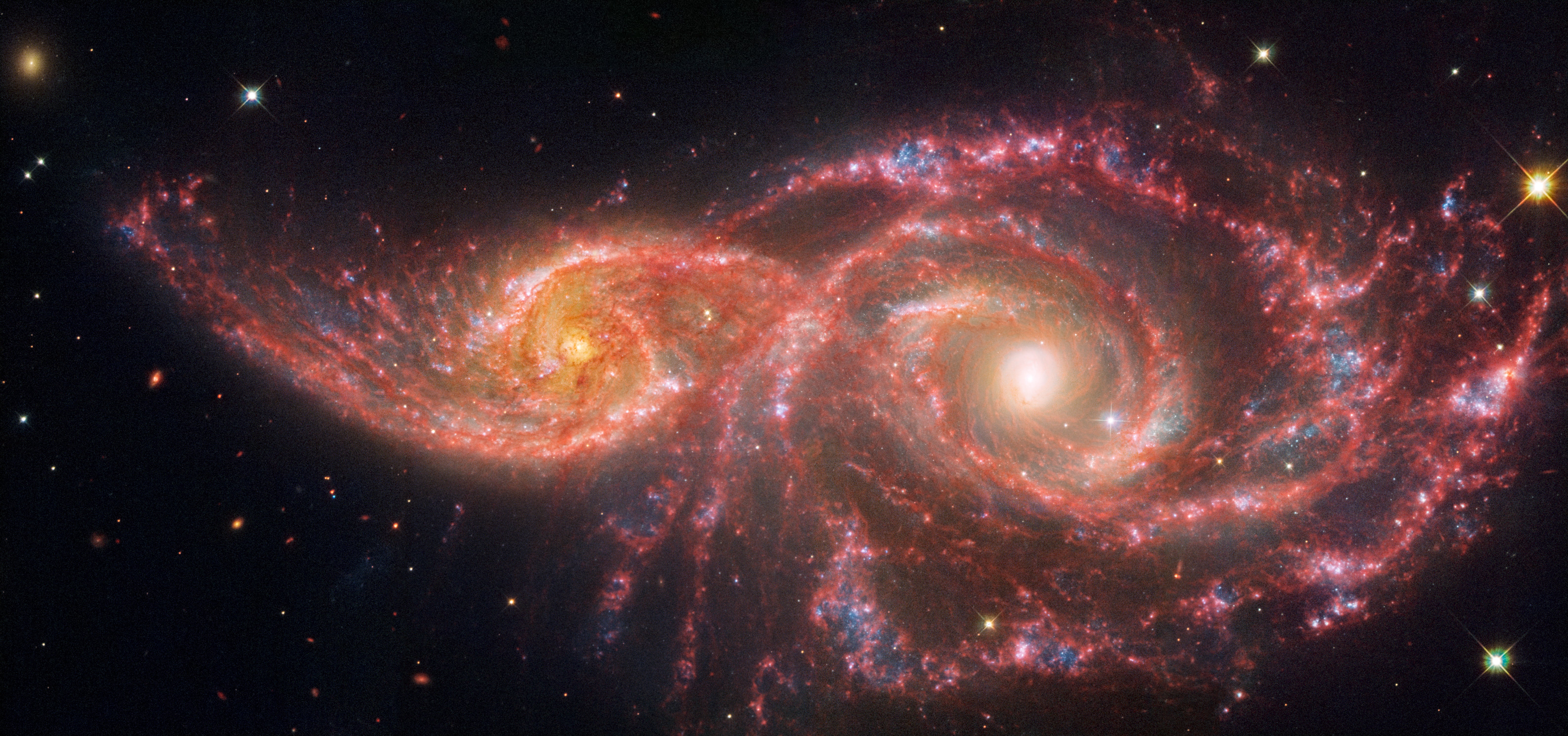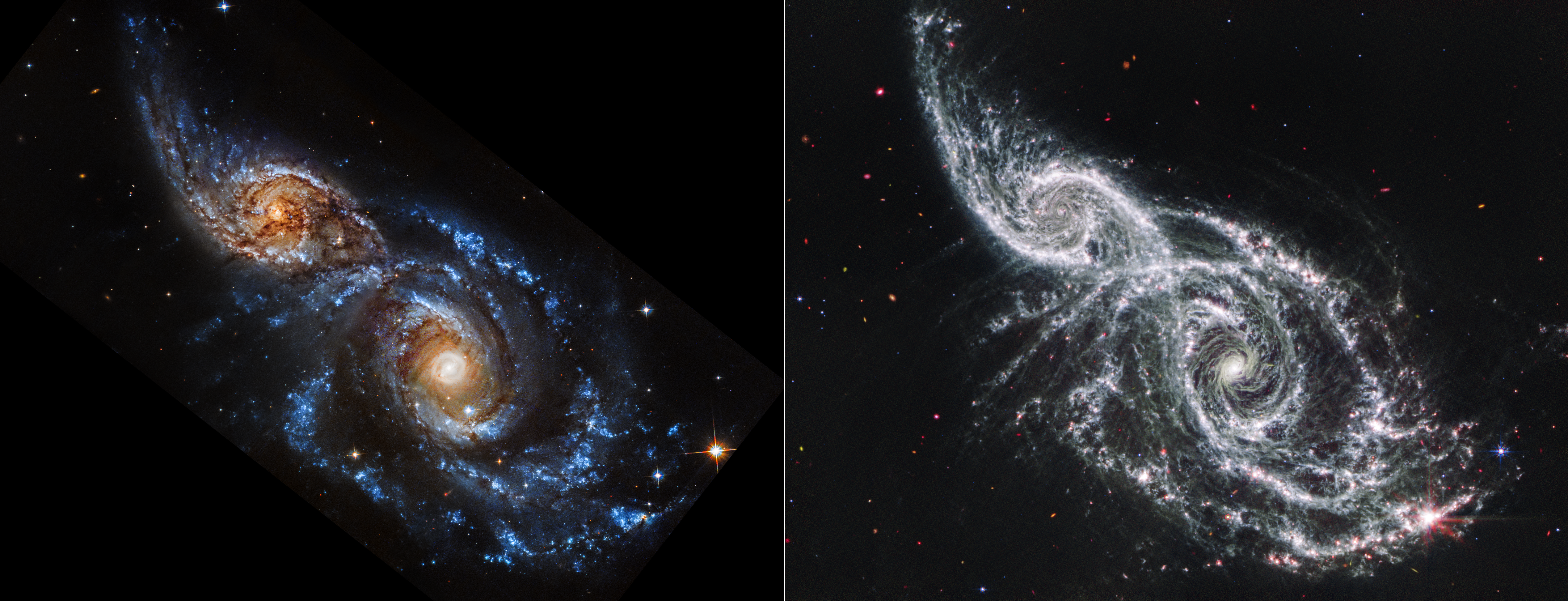The universe is watching: NASA telescopes capture stunning image of space ‘eyes’
Areas where the spiral galaxies may have ‘slammed’ together are seen in chilling detail
NASA telescopes have captured two ghastly galaxies that look like a creepy pair of staring “blood-soaked” eyes floating in space.
The spiral galaxies, which are located 114 million light-years from Earth, are known as IC 2163 and NGC 2207.
Seen in chilling detail, the vibrant reds and pinks are contrasted against the dark background of the cosmos and other distant galaxies.
NASA’s Jet Propulsion Laboratory said the colors were made possible using mid-infrared light from the James Webb Space Telescope and visible and ultraviolet light from NASA’s Hubble Space Telescope.

Webb’s Mid-Infrared Instrument, also known as MIRI, is an imager that has helped to reveal new features of the galaxies’ “near miss.”
NASA said that IC 2163, to the left of the shot, slowly crept behind NGC 2207 millions of years ago.
Bright red lines in the “eyelids” and front of the galaxies are evidence of “light scrape,” where the galaxies may have slammed together.
The graze may have also distorted the galaxies’ curved “arms,” and tendrils from the pair look like they’re hanging between the stellar systems’ cores.
These galaxies also have high rates of star formation and produce the equivalent of two dozen new stars that are the size of the sun. The lower “eyelid” of the smaller IC 2163 is filled with new star formations.
Stars are hot balls of gas and the Milky Way galaxy contains more than 100 billion of the up to one septillion stars the universe could contain. The Milky Way only produces around two or three new sun-like stars each year.

IC 2163 and NGC 2207 have hosted seven known explosions of stars in recent decades, which may have allowed for additional stars to form.
Over millions of years, NASA says the galaxies may dance by each other repeatedly. But, the galaxies’ cores and arms may also meld, and the arms. That could reshape their arms and leave behind a bright, cyclops “eye” at their center.
When that happens, star formation will slow.
Join our commenting forum
Join thought-provoking conversations, follow other Independent readers and see their replies
Comments
Bookmark popover
Removed from bookmarks